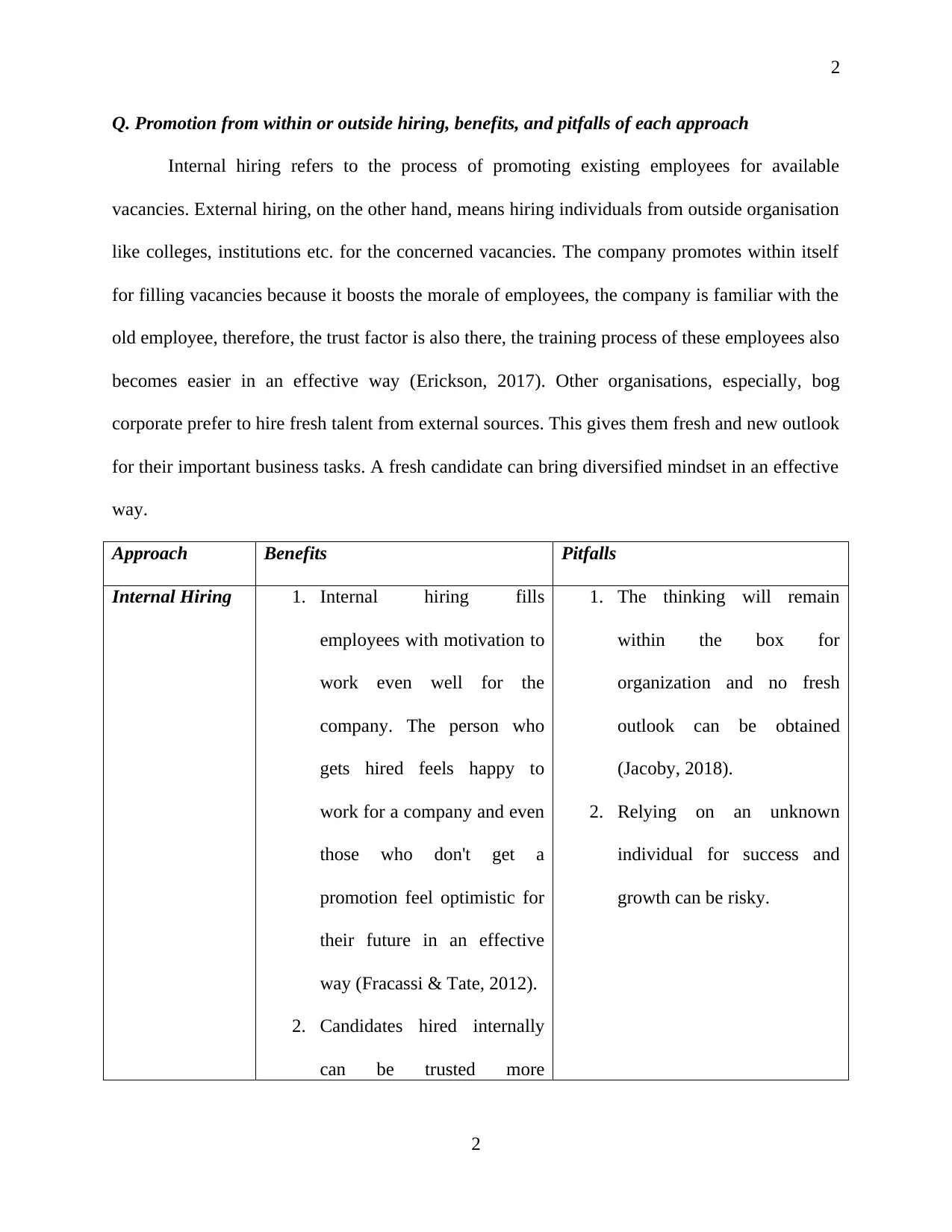HRM: A Comparative Analysis of Internal and External Hiring Strategies
VerifiedAdded on 2019/09/23
|4
|507
|148
Report
AI Summary
This report examines the contrasting approaches of internal and external hiring within Human Resource Management (HRM). Internal hiring involves promoting existing employees, boosting morale, leveraging familiarity, and simplifying training. External hiring, on the other hand, brings in fresh talent, new perspectives, and potentially lower initial costs. The report highlights the benefits of each method, such as employee motivation and trust for internal hires, and new insights for external hires. It also acknowledges the pitfalls, including limited perspectives and potential risks with unknown individuals for internal hiring, and increased costs for external hiring. The report references several academic sources to support its analysis, offering a comprehensive overview of the strategic implications of each hiring approach.
1 out of 4











![[object Object]](/_next/static/media/star-bottom.7253800d.svg)